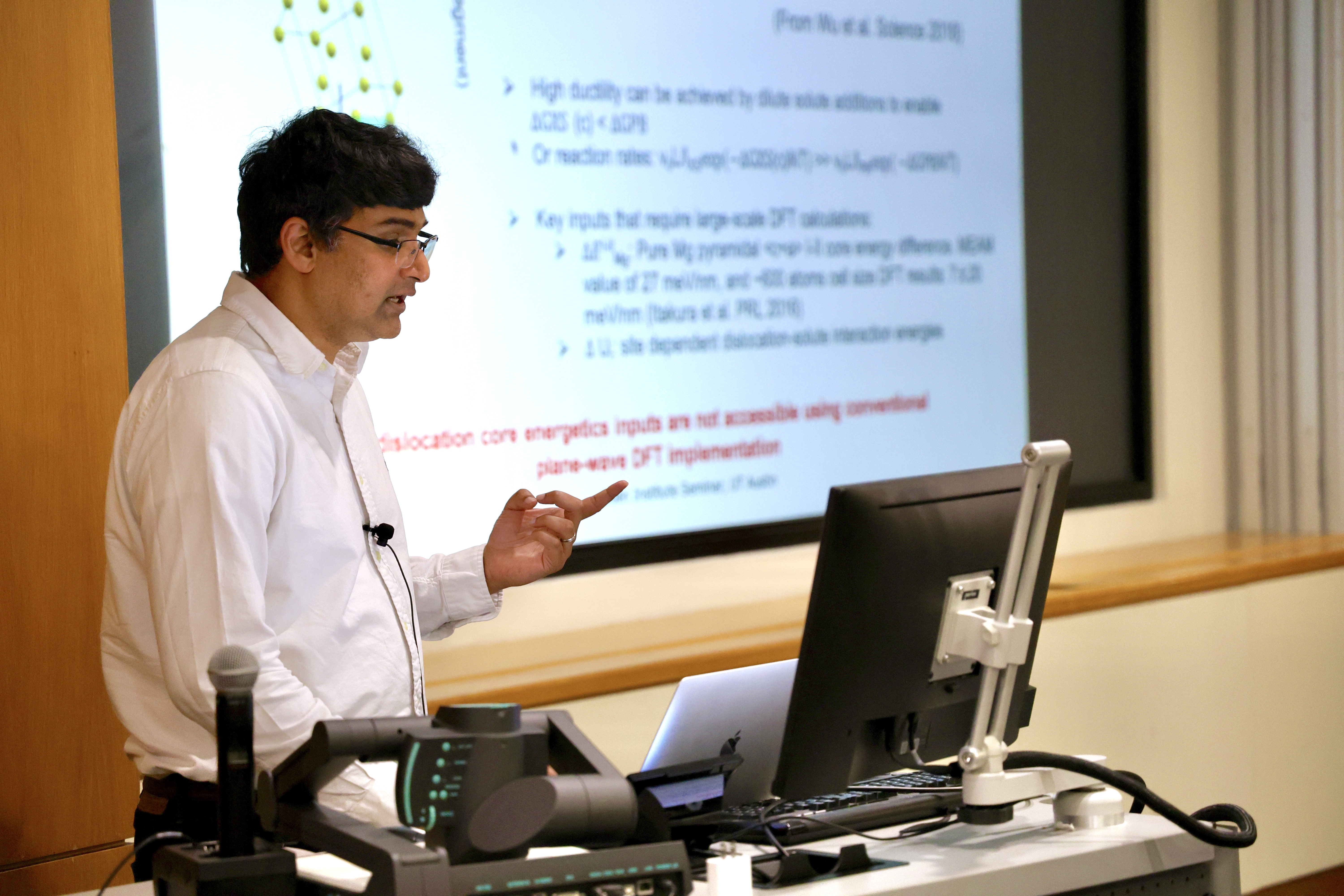On April 23, 2024, the Oden Institute for Computational Engineering and Sciences at The University of Texas at Austin welcomed Professor Vikram Gavini from the University of Michigan for the first lecture in the Oden Institute Distinguished Lecture Series. His presentation, "Towards Large-scale Quantum Accuracy Materials Simulations," captivated an audience of researchers, students, and professionals eager to explore the cutting edge of computational materials science.
Gavini’s research focuses on developing algorithms and computational frameworks for large-scale ab-initio calculations to understand materials properties, with a strong emphasis on high-performance computing (HPC) aspects of electronic structure calculations.
Addressing Key Challenges in DFT
Gavini’s talk delved into the intricate world of electronic structure calculations, particularly those utilizing density functional theory (DFT). While DFT has been instrumental in predicting various materials properties, Gavini highlighted persistent challenges. The domain-size and geometry restrictions in many widely-used DFT implementations limit the complexity of materials systems that can be analyzed. Furthermore, the accuracy of model exchange-correlation functionals in DFT remains a significant hurdle, particularly for strongly-correlated materials systems.
Innovative Computational Methods
The centerpiece of his Distinguished Lecture in Computional Materials was the introduction of advanced computational methods and numerical algorithms designed to overcome these challenges. His work on adaptive finite-element discretization has led to the creation of DFT-FE, an open-source code capable of performing fast and accurate large-scale DFT calculations. Demonstrating remarkable computational efficiency, scalability, and performance, DFT-FE can compute the electronic structure of systems containing thousands of atoms within minutes.
Gavini illustrated the practical applications of DFT-FE through recent studies, including the energetics of quasicrystals (ScZn7.33) and dislocations in magnesium (Mg). These examples underscored the tool’s capability to tackle complex materials systems, expanding the horizons of materials science research.
Bridging Quantum Many-Body Methods with DFT
Another highlight was his team’s progress in enhancing the accuracy of DFT through the integration of quantum many-body methods. By computing and utilizing exact exchange-correlation potentials, Gavini’s research aims to improve the exchange-correlation functional descriptions in DFT, thereby addressing one of the core challenges in the field.

